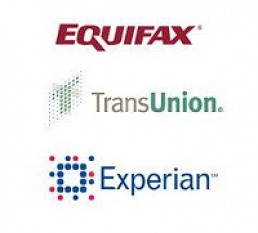The first step of the entire credit improvement process is getting familiar with your report. It all starts here and by law you have access to one credit report per year. There are a variety of resources out there that provide reports or some type of credit monitoring service. I know you’ve probably seen freecreditreport.com commercials but those aren’t free.
 All three reporting agencies (Experian, Transunion, and Equifax) are available. while different bureaus might have different information, I recommend pulling only one of them. That way you can pull the others at different times of the year, perhaps in 4-6 ,months and months 9-12 . The best website for your free credit report is annualcreditreport.com.
All three reporting agencies (Experian, Transunion, and Equifax) are available. while different bureaus might have different information, I recommend pulling only one of them. That way you can pull the others at different times of the year, perhaps in 4-6 ,months and months 9-12 . The best website for your free credit report is annualcreditreport.com.
You will have to answer a series of questions to verify your identity and if you answer them correctly you will be provided with your most recent report. Please note that you will not receive your score. Scores cost money. If your goal is credit score improvement, I recommend paying for it just to see where you are starting from. And do not be alarmed, it is extremely rare that all three, even two of the reports have identical scores.
Once you open your report I recommend printing it or saving it as a PDF on your computer. The free credit report offer only allows you to access it free once a year without paying.
Now for the nitty gritty as my mom used to say. I am referencing an Experian report for this post. All Reporting bureaus will have differences and similarities .
You will see a guide that let you know what the numbers and abbreviations you will find on your report mean. The report is pretty explanatory. You will find negative items first. It may put you to shame but Scrutinize this info. Make sure it is correct. I once had a $32,000 account reporting twice.
On each individual item you will see valuable information such as the creditor and their contact info (you will need this if you plan to challenge any debts), date opened,your highest balance, and account notes such as when you went delinquent, etc. I say pay straight attention to the Status details. THIS COULD SAVE you money! In this field it will provide info such as when the debts will “fall off” your report, basically no longer be reported, and other info such as disputes etc. We will go into disputes soon as I’ve had success with a few disputes.
The fall off info can save you money because when deciding who to payback you should consider what’s falling off. If you have debt scheduled to fall of in the next 3-6 months I recommend allowing that to fall off and channelling your money into a newer debt or one that’s scheduled to reflect for several more years. I personally had two items fall off my report in December and saw approximately a 15-20 point boost in my credit score and all I had to do was be patient.
Next up are the accounts that are in good standing. This is the section where you get to wipe the look of shame of your face and pat yourself on the back. Theres not too much to stress here as it pretty much makes you look good. But double check balances and accounts here, you wouldn’t want unauthorized mortgages in your name.
The next section is the inquiries section. There’s “Inquiries shared with others” or Hard Inquiries and “Inquiries shared with only you” called soft inquiries. There’s mixed sentiments as to how much hard inquiries impact your credit. Some say upwards to 5- 10 points per pull others say 1-3 points, some say none. Rule of thumb though is try not to apply or credit if you don’t have/ need to. I recently went on a credit applying binge because Prime accounts finally opened back up to me. I’ve added a USAA rewards MasterCard, a Citi Bank Diamond Preferred Card, and a Macy’s card (in the name of their good ass coupons) to my portfolio. I plan to grow these cards and use them to further improve my credit standing with by maintaining low utilization and on time payments so no more plications for at least 1 year.
The Inquiries seen by only you or soft inquiries, are often debt collectors looking to see if you’ve come into money and started paying off other debts. Don’t be surprised if you start getting more collection letters from dormant debts as you clean your act up. You’ll also probably see companies and banks who are patrolling for people to send “Pre-Approved ” offers to.
Last you will find your personal information, on Transunion I think this info comes first. But this portion reflects any address that you previously lived at, received mail at, etc. A gypsy like me has 8 different addresses in this field. There’s a few credit dispute trick for this section that I will save for a later post.
This is a general overview of your credit report and the kick off for the credit report series. Next up is Understanding Scoring then we will get into my favorite tools.
Feel free to post your questions of topics you’d like me to expand upon in the comments section!
You said: